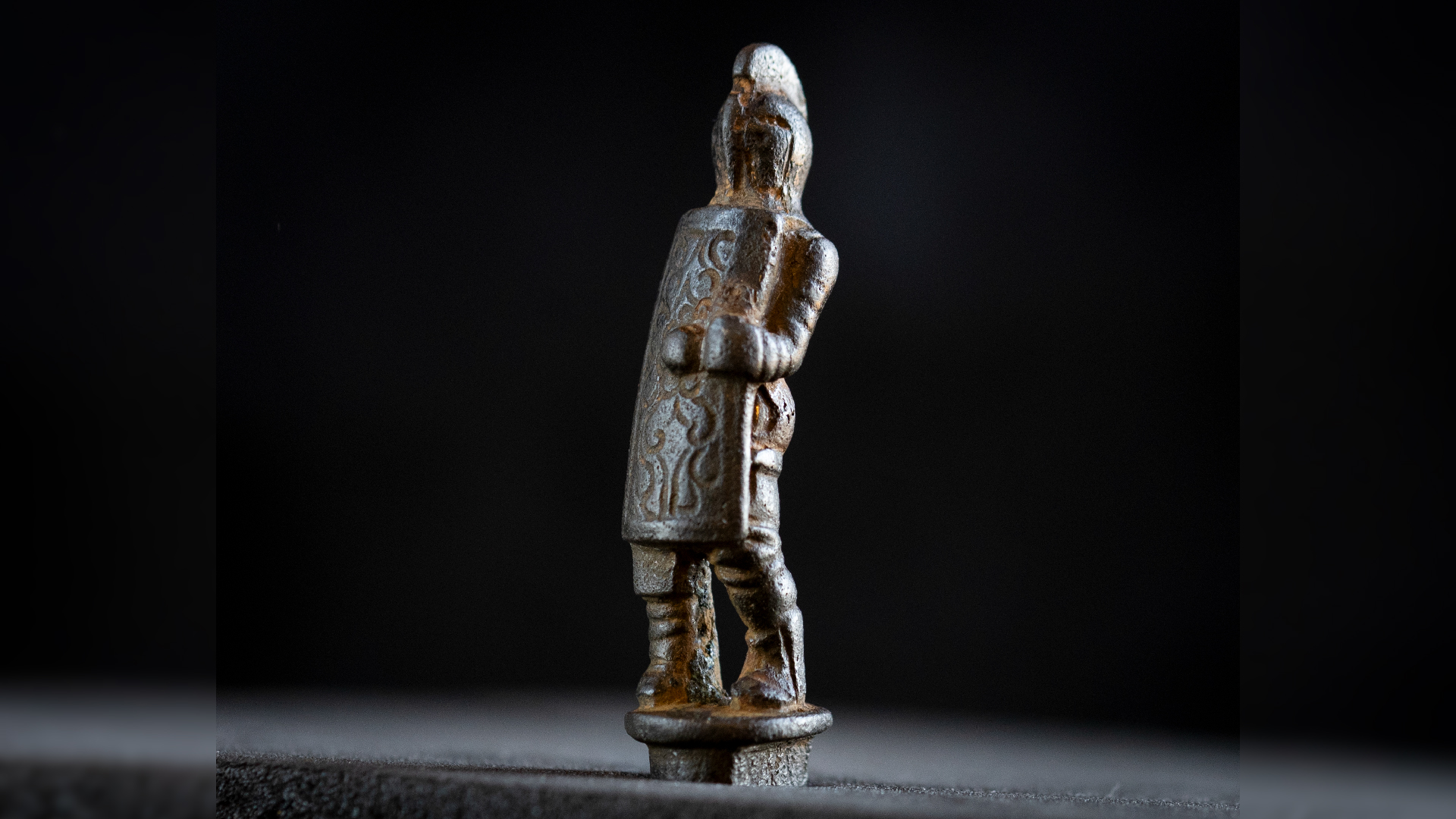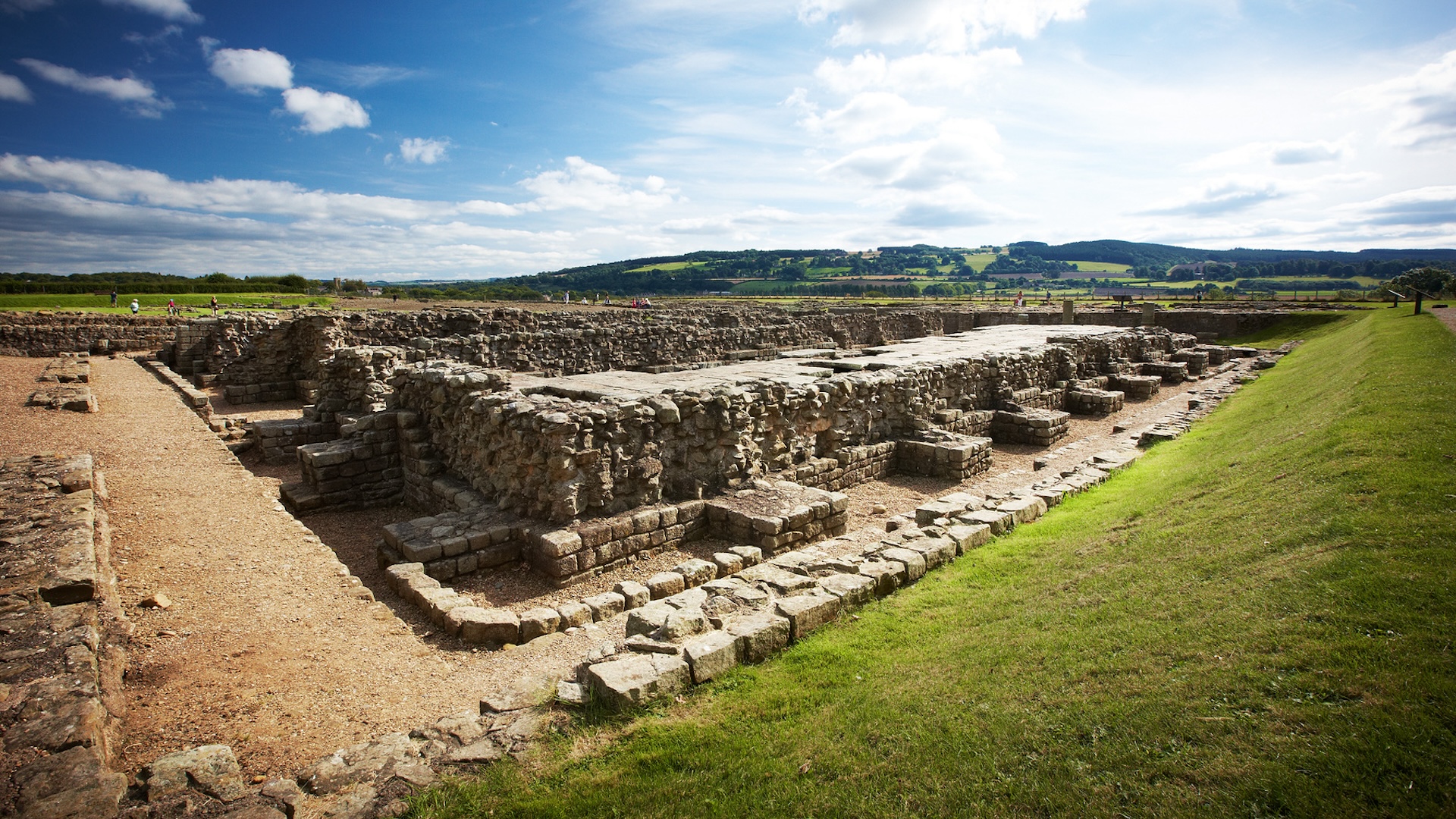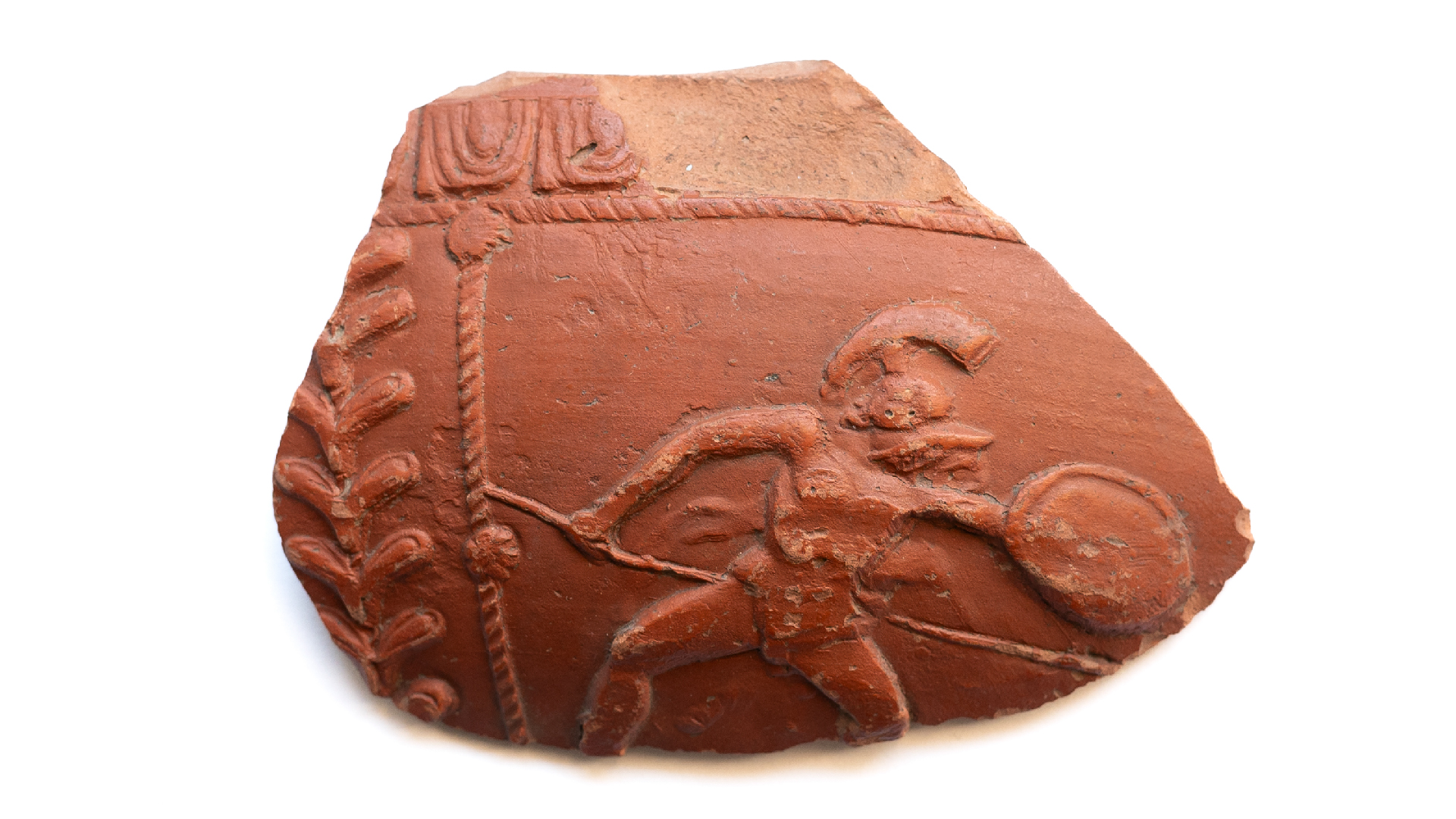
Archaeologists in England have discovered a rare 2,000-year-old Roman knife handle in the shape of a gladiator, proving that these iconic fighters' acclaim reached as far as the outer limits of the Roman Empire. The find comes just in time for the highly anticipated release of the movie "Gladiator II."
The handle is made of copper alloy and depicts a gladiator with a helmet and a shield. The figurine represents a secutor gladiator: a heavily armored class of fighter whose name was derived from the Latin words for "chaser" or "pursuer" and specialized in close-quarters combat against the retiarius gladiator, a more agile net-and-trident-wielding class of gladiator.
An inspection revealed that the gladiator figurine is left-handed. Left-handed gladiators were considered unlucky, though some were specifically taught to fight left-handed to give them a unique advantage, according to a statement from English Heritage, a charity that oversees historic sites in England. In this case, researchers suggest the feature might mean that the gladiator represents a specific fighter rather than a symbolic warrior.
In ancient Rome, gladiator fights, or games, were one of the most attended forms of public entertainment. The gladiators were normally slaves or condemned criminals, and the fights sometimes ended in the death of a gladiator. The events were organized by members of the upper Roman class, including the emperor himself, to show off their wealth, celebrate special occasions, and entertain the masses. Though the Colosseum in Rome is by far the most famous amphitheater to have hosted gladiatorial games, they officially took place all throughout the empire from 105 B.C. to A.D. 404.
Related: Grand tomb of Roman gladiator found in Turkey actually contains the remains of 12 other people
"Despite being enslaved and socially outcast due to their profession, gladiators could become huge celebrities," Frances McIntosh, English Heritage's Collections Curator for Hadrian's Wall and the North East, said in the statement.

The knife handle is clearly a Roman gladiator souvenir, according to the statement. Though gladiator memorabilia is well documented — including ceramics, cups, lamps and figurines — it is a rare archaeological find in Britain. The find highlights just how pervasive gladiatorial enthusiasm was.
"Even now, almost two thousand years later, the fascination around gladiators persists and has expanded even further into modern popular culture, as evidenced by the excitement surrounding the new Gladiator film sequel," McIntosh added.

The handle was discovered in a river in Corbridge, a Roman settlement and supply base originally called Corstopitum situated along Hadrian's Wall in Northumberland, half a mile (0.8 kilometers) west of modern-day Corbridge. The Roman settlement dates to A.D. 79 and was inhabited until the Romans left Britain in around A.D. 400.
English Heritage plans to put the rare knife handle, as well as other finds from the river, on display at Corbridge Roman Town, a preserved archaeological site, next year.







